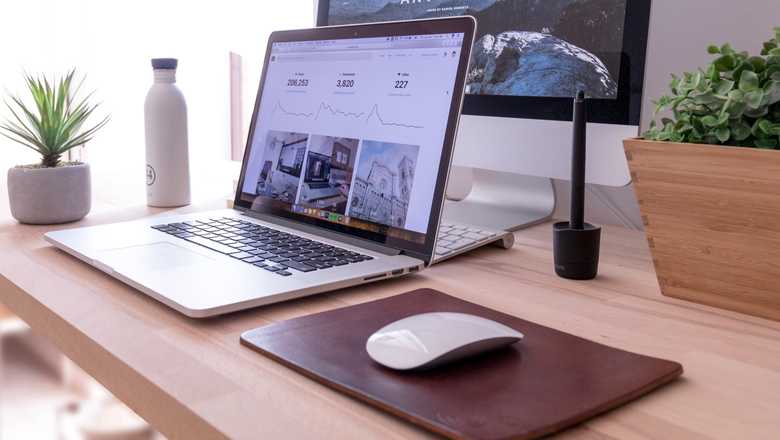As a freelance editor, you need an online presence – and that means having your own website. But how on earth do you build one?
Well, there are several options. Knowing what these options are and then choosing the right one for you is the first – arguably most important – step. Most people skip this step because they aren’t aware of the options. So in this article, I’m going to lay out exactly what those options are.
Option 1: Hire a professional website designer AND a professional web developer
This is probably what most people think they should do if they have no clue about building websites.
However, my other half is a web developer, and through his 10+ years of experience in the industry, I know that to hire a decent web designer to design your website and a developer to build your website (yup, those are two separate skills) will cost upwards of five thousand pounds – and that’s for a very basic website.
For most people, this isn’t feasible.
Even if you had the funds, I’d argue it’s not sensible to sink so much money in a website when you’re first starting out because you might not know where your professional life is heading; you might want to switch things up a little as you learn more about how you like to do things. Or you might run out of money.
Generally, when people think they’re going down this route, they’re not.
They don’t realise that design and development are two very different specialist skills.
(A web designer essentially creates the digital drawing of a website. A web developer uses programming languages to code the design into existence.)
And so they end up hiring more of a designer-developer or Jack-of-all-trades.
That’s not necessarily a bad thing, as long as they understand what they’re purchasing.
Option 2: Hire a designer-developer who specialises in themes
There are lots of freelance web designers out there who use theme designs (i.e. pre-built website frameworks) to build websites for their clients.
Design and web developmental skills in these individuals or companies will vary greatly.
Websites created this way won’t be the best in terms of quality, customisation or SEO (Search Engine Optimisation – techniques that make your website more visible in search engines like Google), but if you get a good enough person on the job, you’ll have a good enough website!
Fees for this kind of service vary dramatically, and sadly, if you don’t have an eye for design, you could easily end up hiring someone who doesn’t either.
I see this happen … a lot.
So if you don’t think you have much of an eye for design, enlist the help of a friend who does when choosing one of these designer-developers to work with.
Option 3: Build it yourself using a website builder
If you’re tech-savvy enough (or willing to learn) and want the most cost-effective option, I recommend choosing a website platform (e.g. WordPress, Squarespace, Weebly …) where you can use a customisable theme.
There are thousands of themes to choose from online, many free.
Just make sure you buy your own domain name (the bit that goes in the address bar of the browser) so your URL is something professional and doesn’t include the name of your platform or host.
For the first eight years of running my business, I used a self-hosted WordPress site (I highly recommend SiteGround* to host your website).
First I used a free theme, then I upgraded to a paid theme. This served me well!
A few years ago, I decided it was time to switch to something more refined, and I also wanted to learn some new skills, so I decided to design my own website from scratch and hire a web developer to build it for me.
(Luckily, I had previously promised to marry said web developer, so he gave me a substantial discount. Note that this method doesn’t work for everyone.)
Pro tip: Create your brand before you design your website
You also need to think about the brand behind your website.
Your brand is the way in which your business (or you as an individual) is perceived by those who come across it.
When we think about branding, we often think about logo design and colour pallet – but there’s much more to it than that. And you can’t expect a designer to create a brand for you from scratch as well as design and build a whole website.
Brand development is another professional service (separate from website design) that can cost upwards of a thousand pounds. A professional logo design alone can set you back three hundred pounds or more.
So my advice is to start with your brand – before you even think about creating your website. It will save you a lot of time and effort in the long run.
Don’t worry if you’ve already set up your business and are retrospectively thinking about your brand.
The beauty of owning your own business is you can change it as and when you see fit! I once completely overhauled my whole business brand, including my business name and website URL, and my business is now infinitely stronger for it.
There’s so much that goes into creating an effective, attractive website that it’s impossible to cover it in just one blog post, which is why I go into much more detail in my course, The Visible Editor.
When you don’t know where to start, it can be overwhelming thinking about building a professional website. But it doesn’t have to be. With the right information, some careful consideration and some patience, you’ll get there.
*Affiliate link. I get a small commission if you sign up to SiteGround, but they are a company I use myself and am pleased with.





